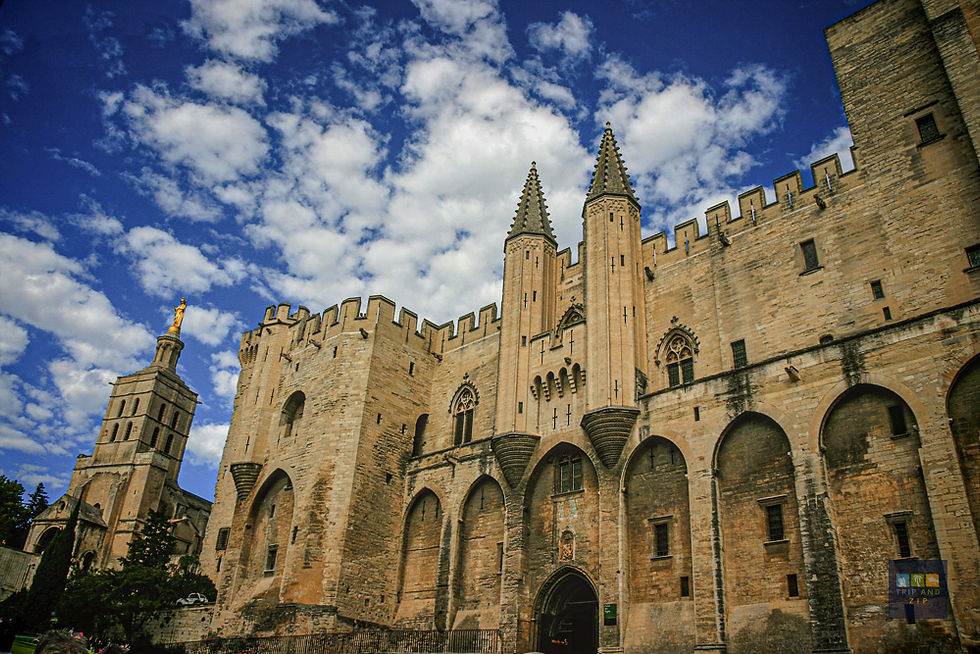The Gothic Marvel of Avignon: Inside the Pope’s Palace
- Trip And Zip

- Aug 15, 2007
- 2 min read
Updated: Mar 2
Nestled in the heart of Provence, the Pope’s Palace in Avignon is a masterpiece of medieval architecture and a striking testament to the power and influence of the Catholic Church during the 14th century. Walking through its massive stone corridors and pebbled courtyards, you can almost hear the whispers of the past, echoing tales of faith, intrigue, and ambition.

The Palace, or Palais des Papes, is the largest Gothic palace in Europe, built between 1335 and 1352 during a fascinating and turbulent chapter in Church history. It was here, in Avignon, that the papacy established its seat for nearly 70 years—a period often referred to as the Avignon Papacy. This relocation of the papal court from Rome to Avignon was driven by political tensions in Italy and the influence of the French monarchy, which saw Avignon as a more stable and secure home for the Church.
Walking through the grand halls and courtyards, I couldn’t help but imagine what life was like here. The smell of stone and the cool touch of the ancient walls transported me to a time when the corridors bustled with papal guards, scholars, and dignitaries. It was easy to envision grand ceremonies in the towering Grand Chapel, the reverberating hymns filling the space.


What struck me most was the contrast. Outside, Avignon is a lively, sunlit city filled with charming cafés and markets. Inside, the Palace is a fortress—solemn, imposing, and awe-inspiring. I found myself running my fingers along the carved frescoes and picturing the hands that etched them centuries ago. How many people walked these very steps, bearing both the weight of religious duty and the controversies that marked the Avignon Papacy?
The story of the papacy here is filled with drama. The first pope to settle was Clement V, who fled Rome in 1309 to escape political chaos. For nearly 70 years, Avignon became the center of the Catholic world, a thriving hub of diplomacy, art, and governance. Yet, it was not without scandal. Critics accused the Church of becoming too cozy with the French monarchy, and the resulting tensions eventually contributed to the Great Western Schism (1378–1417). This schism saw rival popes competing for legitimacy, further fracturing the Church’s unity and leaving a lasting impact on Christendom.
Wandering through the Pope’s Palace today, it’s impossible not to feel the weight of its history. The echo of footsteps on ancient stone floors, the light playing off frescoed walls, and the sheer scale of the place seem to pull you back to a time when this grand structure was the heart of a kingdom within a kingdom. There’s something humbling about standing in a place that has weathered centuries, its stones still holding the secrets of a time that shaped the course of Europe. It’s a journey that stays with you long after you leave.








Comments